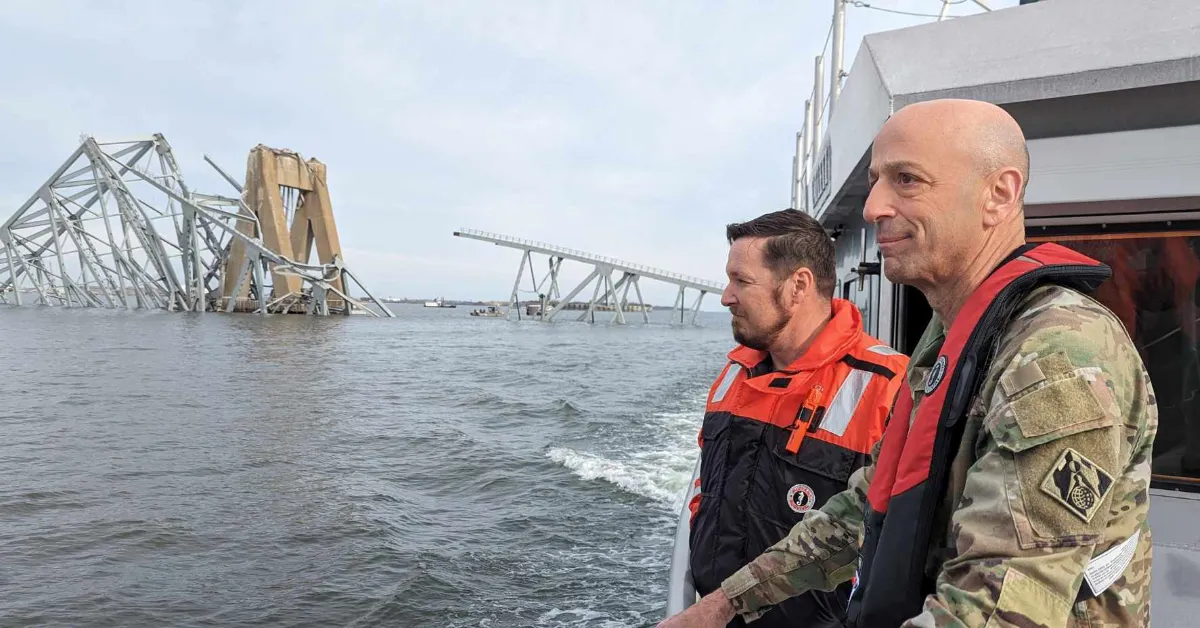
The collapse of the Francis Scott Key bridge in Baltimore triggered a very early wake-up call for reporters and producers working in Maryland newsrooms early Tuesday morning.
The incident, caused by a cargo ship that accidentally crashed into one of the bridge’s support beams, happened around 1:30 a.m. local time, when many newsrooms were operating with few workers who were able to cover the massive story.
International news organizations were among some of the first to cover the incident, with Reuters, the Associated Press and BBC News pushing out news bulletins that offered few details in the hour immediately following the collapse.
Sinclair-owned WBFF (Channel 45, Fox) was the first Baltimore-based news outlet with an online news story that covered the collapse of the bridge, with a story posted around 2:30 a.m. local time that included a short video clip of the steel and concrete structure falling into the water.
In the two hours after the collapse, WBFF stood alone as one of the few local news outlets with any reporting on the incident, with the other three television stations and Baltimore’s news radio station offering coverage of Mayor Brandon Scott’s State of the City address, which took place one day prior.
Several feared dead in Baltimore bridge collapse after cargo ship in Patapsco River rams into Francis Scott Key Bridge. Read the latest: https://t.co/jVzumuEmIh pic.twitter.com/70Y3FPzWey
— Matthew Keys (@MatthewKeysLive) March 26, 2024
Around 3:30 a.m. local time, Hearst-owned WBAL (Channel 11, NBC) posted a short write-up of the incident on their website, and published a lengthier video that showed the cargo ship Dali crashing into the support beam as captured by a webcam.
By 4 a.m. local time, all four Baltimore television stations — to include WJZ-TV (Channel 13, CBS) and WMAR (Channel 2, ABC) — had short write-ups on their websites about the bridge collapse. None of the stations interrupted normal programming on their broadcast stations to cover the story until around 4:30 a.m., when WBAL started airing a newscast that normally occupies that time slot.
Until then, the only local, real-time reports came from radio station WBAL (1090 AM, 101.5 FM), which was first to break the news that cars and people likely plunged into the freezing cold water during the Key Bridge collapse. The station also offered early morning motorists with ways to get around the collapse, which included advice on taking alternate bridges and tunnels.
By 5 a.m., the Key Bridge collapse was an international news story, with outlets like BBC News and Sky News offering rolling updates on the story interspersed with clear video footage showing what happened. Both London-based channels — which are free to stream in the United States — aired interviews with engineering experts who offered insight into why the 1.6-mile span of the bridge would collapse based on a single strike from a relatively-slow cargo ship.
An early morning press conference held with emergency officials around 6:30 a.m. was widely carried by local television and radio stations in Baltimore, along with network news outlets and international news channels. On the West Coast, NBC stations and affiliates carried breaking news of the press conference, while ABC and CBS stations and affiliates opted for pre-recorded overnight morning news.
During the press conference, emergency officials affirmed two people had been pulled from the water. One of the victims had major injuries and was transported to a local trauma center, while the other refused medical treatment at the scene, according to Baltimore City Fire Chief James Wallace.
WBAL’s news helicopter was the first to gather early morning aerial footage of the scene, later joined by helicopters from Washington, D.C. stations WRC-TV (Channel 4, NBC) and WTTG (Channel 5, Fox). The helicopters captured footage of the U.S. Coast Guard and other agencies conducting a search-and-rescue mission based on reports that up to six members of a construction crew may still be in the water.
By Tuesday evening, officials with the Coast Guard affirmed their activity was changing from a search-and-rescue mission into a recovery mission on the premise that the six individuals would not be found alive.